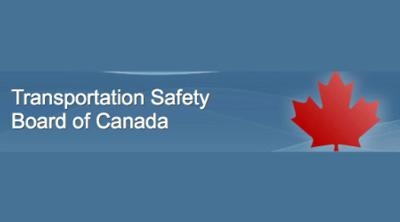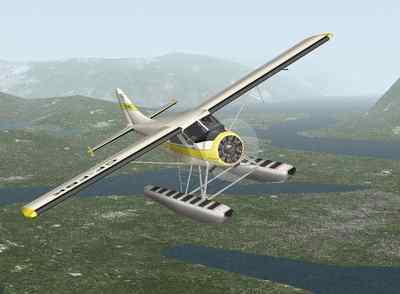2019 Crash Again Highlights Importance Of Stall Warning Systems
In its investigation report (A19O0089) released this week, the Transportation Safety Board of Canada (TSB) identified that a loss of power and subsequent aerodynamic stall led to a collision with terrain near Hawk Lake, Ontario in 2019.

On 11 July 2019, a float-equipped de Havilland Beaver aircraft (DHC-2), operated by Hawk Air as an air taxi (Canadian Aviation Regulations Subpart 703), departed from the Hawk Junction Water Aerodrome, Ontario. Shortly after takeoff, during the initial climb out, just past the northeast end of Hawk Lake, the aircraft crashed in a steep nose-down attitude, severing a power line immediately before impact, and coming to rest next to a hydro substation. Both occupants were fatally injured.
The investigation found that the aircraft likely departed with the fuel selector set to the rear tank position, which did not contain sufficient fuel for departure. As a result, the engine lost power due to fuel starvation during the initial climb. After a loss of power at low altitude, a left turn was likely attempted in an effort to either return to the departure lake or head toward more a desirable location for a forced landing. During the turn, an aerodynamic stall occurred, causing the aircraft to enter a spin and subsequently impact terrain.
The investigation also determined that, if aircraft are not equipped with a stall warning system, pilots and passengers who travel on these aircraft will remain exposed to an elevated risk of injury or death as a result of a stall at low altitude.
This safety issue is not new to the TSB. In October 2013, the Board issued a safety concern regarding the lack of a stall warning system in DHC-2 aircraft. In 2017, a Board recommendation called on the Department of Transport to require all commercially operated DHC-2 aircraft (file image pictured below) in Canada to be equipped with a stall warning system. Transport Canada has since completed a study on the issue and concluded that it will not require all commercially operated DHC-2 aircraft in Canada to be equipped with a stall warning system; as such, the risks associated with this safety deficiency remain.

The investigation also found that, if air-taxi training requirements do not address the various classes of aircraft and operations included in the sector, there is a risk that significant type-, class-, or operation-specific emergency procedures will not be required to be included in training programs. Further, if seasonal air operators conduct recurrent training at the end of the season rather than at the beginning, there is a risk that pilots will not be as familiar with required emergency procedures at the start of each flying season.
Following the occurrence, Hawk Air added more emphasis to its training for engine failures during critical phases of flight. Hawk Air has also made it mandatory for pilots and passengers to use both the lap strap and the shoulder harness for all operations.
 ANN's Daily Aero-Linx (05.02.24)
ANN's Daily Aero-Linx (05.02.24) ANN's Daily Aero-Term (05.02.24): Touchdown Zone Lighting
ANN's Daily Aero-Term (05.02.24): Touchdown Zone Lighting Aero-News: Quote of the Day (05.02.24)
Aero-News: Quote of the Day (05.02.24) ANN FAQ: Contributing To Aero-TV
ANN FAQ: Contributing To Aero-TV NTSB Final Report: Cirrus Design Corp SR20
NTSB Final Report: Cirrus Design Corp SR20




